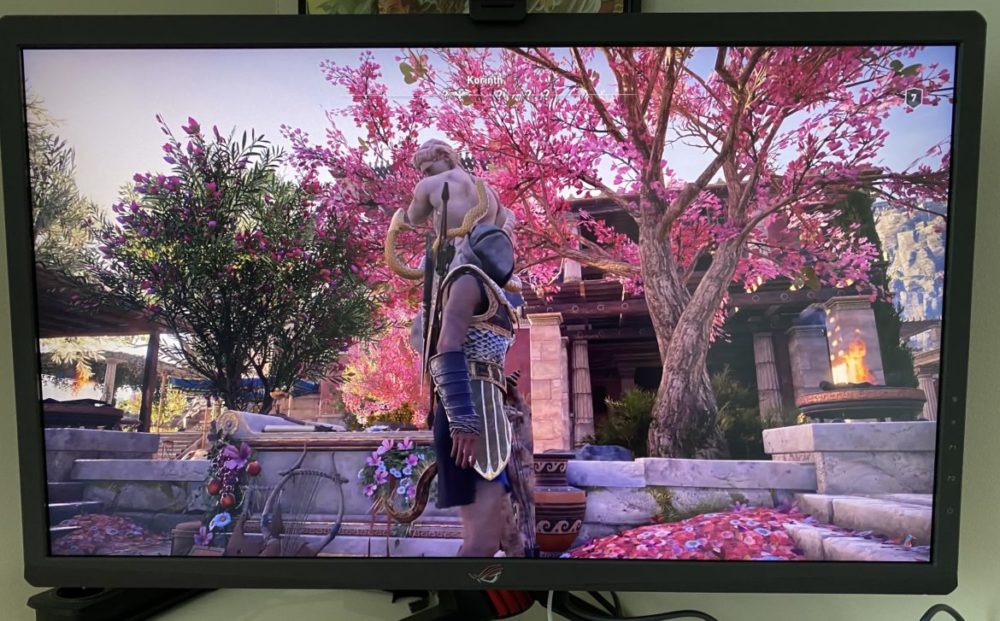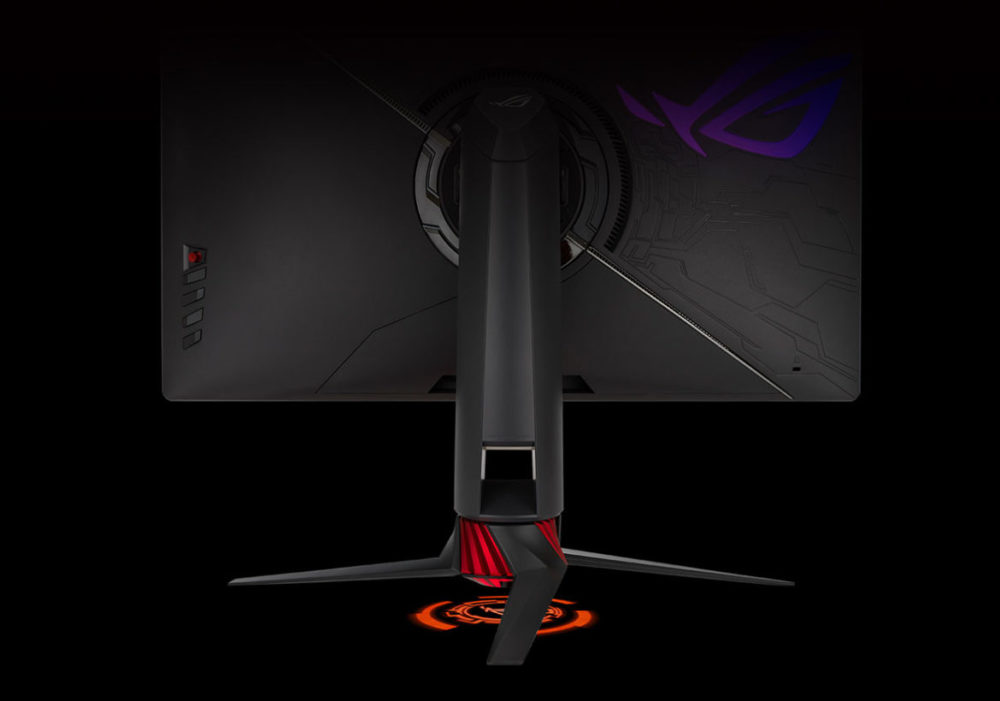TL;DR
Looking for a top-tier 27-inch 4K monitor that crushes gaming and productivity? The Asus ROG Strix XG27UQ delivers stunning clarity, vibrant colors, and a buttery-smooth 144Hz refresh rate, even supporting HDR for that extra visual pop. It's a fantastic all-rounder for work and play, boasting excellent response times and sharp text rendering. However, its premium performance comes with a premium price tag, and it notably lacks HDMI 2.1, which might be a dealbreaker for PS5/Xbox Series X owners aiming for the absolute latest features. Discover if its current brilliance outweighs its future-proofing limitations!
In today’s environment, particularly with the rise of remote work, a high-quality monitor is an essential investment. A monitor’s capabilities extend beyond simply displaying games with impressive image quality; it’s equally crucial for productivity and media consumption. While numerous manufacturers offer large screens packed with features, the Asus ROG Strix XG27UQ stands out for its consistent quality, making it a top-tier gaming and general-use monitor, at least for the time being. The key question is: does it offer sufficient future-proofing?
Premium 4K
At the time of this review, the market for 27″ 4K monitors is relatively limited. While many models offer refresh rates of 144Hz at resolutions just above Full HD, the Asus XG27UQ distinguishes itself by delivering true 3840x2160p resolution. It supports HDR up to 10 bits, aligning with the HDR10 standard (though not the dynamic Dolby Vision format). Depending on the graphics card, users can leverage all picture properties simultaneously, requiring a Radeon RX 5700 or GeForce RTX 20-series or better. Without such a card, the display is limited to 144 Hz in SDR. The display’s HDR capability is rated at 400 nits, with peak brightness reaching around 450 nits. While this is approximately half the brightness of a modern OLED or the Asus PG27UQ (which uses more dimming zones and has a higher price point), it’s perfectly adequate for both gaming and professional tasks. In these scenarios, a brightness level of 200 nits is often optimal to prevent eye strain from overly bright displays. However, these premium features result in a higher cost, with the Asus ROG Strix XG27UQ priced almost twice as high as many other 27″ gaming monitors (which typically lack 4K resolution). The high resolution, however, is not its only advantage.

Crystal Clear, Lightning-Fast Image
Beyond gaming, we at senses also dedicate significant time to writing reviews and articles. The XG27UQ excels in these scenarios, providing a sharp, warm, and comfortable display suitable for extended office work. Text is rendered with clarity, and the image maintains a natural feel, avoiding harshness. The monitor’s color reproduction (90% of DCI-P3) provides vivid visuals without the acidic tones that can cause eye fatigue. The IPS panel offers both superior image quality and fast refresh rates, combined with wide viewing angles. For optimal response times, a DisplayPort connection is recommended to leverage Display Stream Compression (DSC), assuming the graphics card supports it. DSC provides near-lossless compression while maintaining a rapid response. The specified response time is 1ms (GTG), which is virtually imperceptible. However, it’s important to consider the inherent input lag present in all image sources. The average input lag is approximately 7 ms (ranging from 4-11 ms), a very low value that does not noticeably affect gameplay. Considering the substantial number of pixels being processed and refreshed at 4K and 144 Hz (over 8 million), the measured input lag places this monitor in the top tier of its class.

The Asus ROG Strix XG27UQ supports adaptive sync, specifically AMD FreeSync (with a variable refresh rate range of 48-144 Hz). Although not officially supported, it can be configured to function with GeForce G-Sync.
Light Show – For Those Who Want It
As is common with gaming accessories, the Asus ROG Strix XG27UQ incorporates RGB lighting, including the capability to project the ROG (Republic of Gamers) logo onto the desk surface. For users who appreciate these lighting effects, perhaps integrated with systems like Philips Hue, the monitor provides ample customization options. However, for those who prefer to prioritize the on-screen content, the lighting can be easily disabled. The monitor features four side-mounted buttons and a mini-joystick for navigating the menus. While the menu design is relatively simple, it is intuitive and facilitates straightforward configuration.
The monitor also includes a built-in blue light filter, which we recommend enabling to mitigate eye strain during prolonged use. The filter offers four intensity levels. We suggest using the highest setting that does not noticeably distort the image (we observed noticeable distortion at the maximum setting and opted for the next level down).

Consistent with many professional-grade monitors, the Asus ROG Strix XG27UQ does not include built-in speakers. This is unsurprising, as serious users typically rely on external audio solutions for superior sound quality, or utilize dedicated gaming headsets. A 3.5 mm audio jack is provided on the monitor for convenient audio output.
The stand, a tripod design, is one area where we found room for improvement. While providing adequate stability, it occupies a considerable amount of desk space. A smaller, heavier metal base, similar to those found on Panasonic’s OLED TVs, would have been a more elegant and space-efficient solution.
Image Wizardry
While HDR support in games is growing, SDR remains prevalent. The Asus ROG Strix XG27UQ offers various image processing modes that simulate HDR effects in SDR games, enhancing colors and increasing contrast. Dynamic dimming enables the panel to dynamically adjust brightness in specific zones, further enhancing the visual experience. However, games with native HDR support, such as Call of Duty: Black Ops Cold War and Cyberpunk 2077, exhibit the greatest visual fidelity, particularly when paired with a graphics card capable of rendering them at the highest resolution and refresh rate.

HDMI 2.1 – Please Wait…
The Asus ROG Strix XG27UQ excels in nearly every aspect. However, with respect to future-proofing, the primary shortcoming is its lack of HDMI 2.1 support. This is understandable, as the XG27UQ was released before HDMI 2.1 was fully standardized. However, this limitation prevents users from fully utilizing the capabilities of the latest consoles, the Playstation 5 and Xbox Series X, as HDMI 2.1 is required for VRR, 4K at 120fps, and 8K at 60fps (a feature slated for a future update). While the XG27UQ functions well with both consoles, it’s unfortunate that it cannot leverage their full potential, or that of modern high-end graphics cards (assuming they are obtainable given the ongoing chip shortage). It’s worth noting that HDMI 2.1 is still an evolving standard, and stable image sources that fully support it are anticipated to emerge in the latter half of 2021.
Summary Asus ROG Strix XG27UQ
The Asus ROG Strix XG27UQ exhibits few weaknesses. It is a versatile and high-performing monitor suitable for gaming, professional tasks, and media consumption, delivering sharp visuals and accurate color reproduction. However, it carries a premium price. Users seeking to maximize the capabilities of their graphics cards or the latest consoles may consider waiting for a successor with HDMI 2.1 support (though likely at a higher price). The initial 4K gaming monitors featuring HDMI 2.1 in this size category are expected to approach the price of a 48″ OLED TV, reflecting the cost of cutting-edge technology.
True “future-proofing” is an elusive concept, as technological landscapes are constantly evolving. What is considered current can rapidly become outdated due to evolving standards and the introduction of incremental hardware revisions. These revisions may include partial implementations of newer standards, such as ALLM in HDMI 2.0 or HDR8, which offers improvements over SDR but falls short of full HDR support (which requires at least 10 bits).
Whether a gaming monitor will emerge that combines all desirable cutting-edge features with the image quality of this model remains to be seen. In the meantime, we are pleased to use the Asus ROG Strix XG27UQ as a new benchmark in the monitor category. Highly recommended.

